Hello friends. Today we’ll be reviewing “Ziggurat 2” a procedural first-person rogue-lite shooter with fast-paced combat set in a fantasy world. Developed and published by Milkstone Studios and sequel to the addictive and highly regarded original Ziggurat this new addition to the series offers more action, more spells, more enemies, and (if you’re not careful) more deaths! So let’s see what this game has to offer.
Developer: Milkstone Studios Publisher: Milkstone Studios Genre: Rogue-lite, First Person Shooter, Action, Indie Release Date: 28 Oct 2021 Reviewed on: PC/Windows Available on: PC/Windows Link: Steam Gameplay Video: Youtube Review copy was bought.
You’re an apprentice, one among the few that survived the conflict between heretics and purists wizards that left scorching land and the Ziggurat (a prison holding monsters too strong to kill) destroyed. You’re tasked to rebuild the Ziggurat and imprison (or kill if you have to) all the creatures that fleed the prison. During your adventure, you will find other wizards willing to help and together rebuild order in the land.
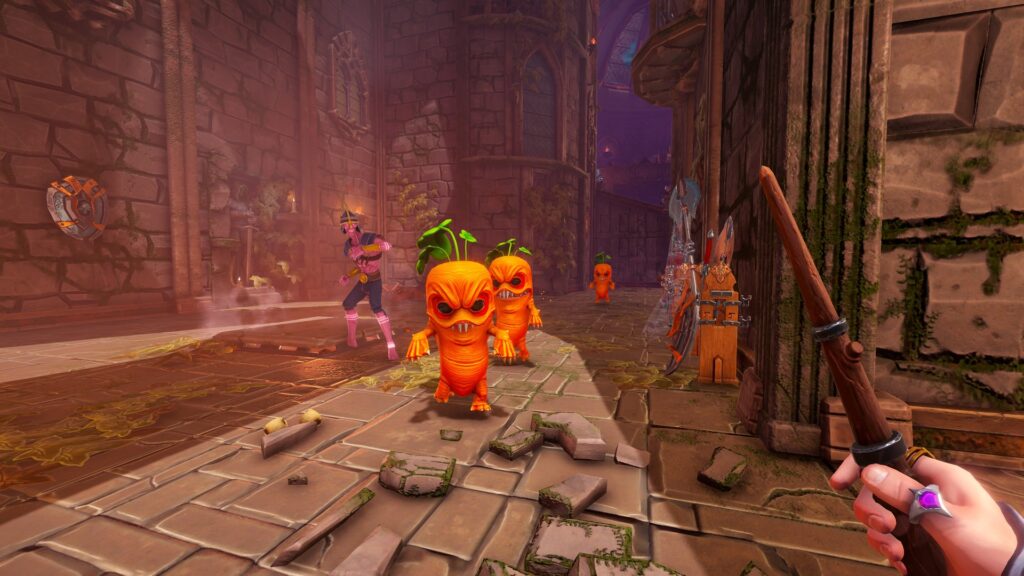
There are 4 distinct gameplay modes in this game – Campaign and 3 “Classic Modes”. In the campaign you start your quest towards rebuilding the Ziggurat, where the Classic Modes each feature a different set of rules and challenges: Ziggurat Trial is a classic mode with no permanent progression and no loadout selection, Infinite Dungeon throws you in a dungeon with endless floors with ever-increasing difficulty, and finally The Gauntlet which pits you against dozens of enemies in a large arena coming for you wave after wave and they become stronger over time.
In campaign mode you’ll get to choose and accept a mission (or a side mission) available, that appears on the map and have a certain objective – you usually will need to kill the end boss to succeed. But regardless of whether you complete the mission or fail it, you’ll get to progress your characters (unlocking perks for them or your weapons) as well as acquire “Insight” which can be applied in the Laboratory and are essentially points to be used in the skill tree that will help you maximize health, mana weapon stats, etc and are universally applied – which is useful when you unlock new heroes and they don’t have to start from scratch.
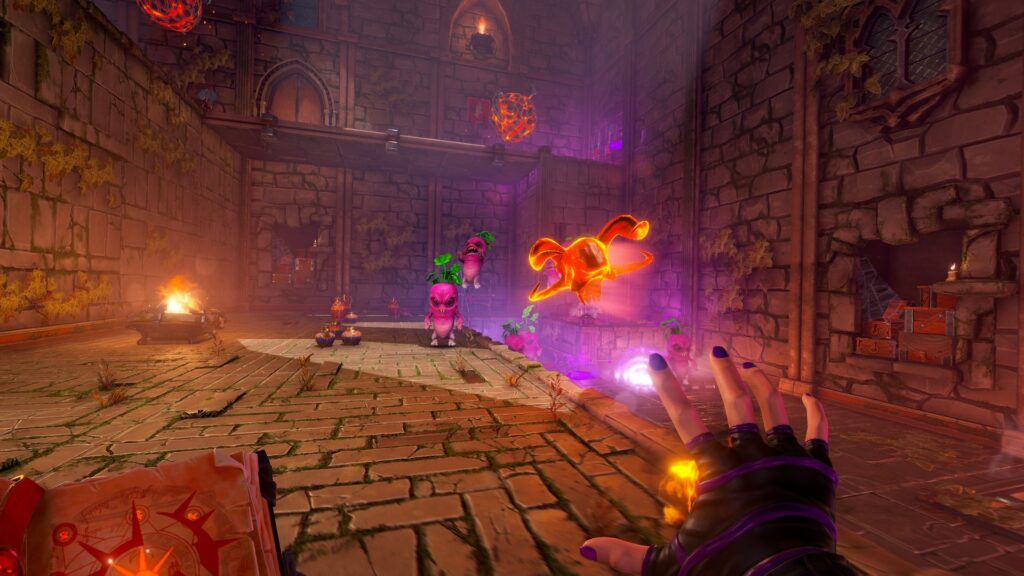
Before venturing into a new mission in the Greyhorn Citadel, you can choose the hero, the wands, weapons, and amulets (all shared between the heroes from a great selection of each type) you’ll start the mission with among the ones you have unlocked. There you get to check the skills of each hero which can be a game-changer in how you play. It’s definitely worth experimenting with different combos and checking what works better for your game style. Depending on the mission, you might even get an extra bonus percentage for a certain selection.
Weapons distinguish between wands (low power but mana regenerates fast), spells (better for short-range combat), staves (longer range with high rate and accuracy), and alchemy (useful for crowd control). They all vary in DPS, Damage, Fire Rate, Mana Usage, Proc Chance, Primary Attack, Secondary Attack, Passive Effect, and Special Effect, and they all (except for wands) require mana of its color shoot – if you’re out of mana you’re out of projectiles and need to wait for it to recharge. While Amulets – which provide an additional skill – vary in Ability, Charges, Recharge per floor, Cooldown, Passive, and Special.
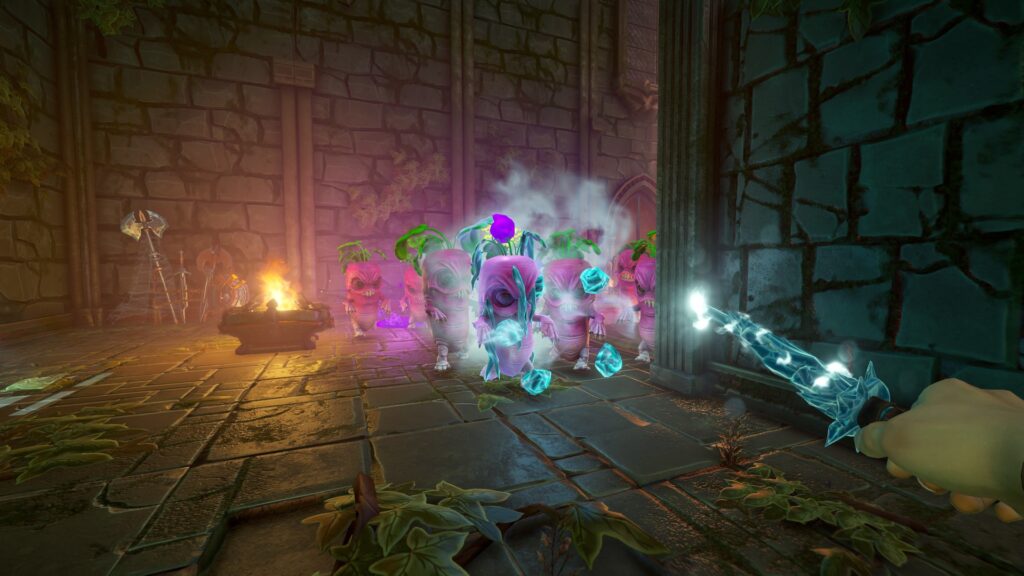
You start the game with two apprentices, and working through the story missions you’ll get to unlock more heroes to play with. Eventually, you’ll unlock all heroes: Argo the Apprentice, Carina the Apprentice, Glyndor the Battlemage, Jacob the Cultist, Kira the Rogue, Eris the Necromancer, Rigel the Acrobat, Margaret the Alchemist, Sirius the Warlock, Nadja the Paladin, Kraz, the Monk. They differ in HP, Wand Mana, Spell power and Staff power, Alchemy, Skills and Perks, Passive and Special effect so when you get to unlock more, your choice will matter on how you tackle the objectives and challenges. Every wizard feels varied with unique special skills and a set of perks unique for each one. Skill categories include Hero skills (e.g Tenacity, Readiness, Ascension, etc.), Mana skills (Inspiration, Adaptation, Illumination, etc.) Weapon Skills (Spell Power, Staff Power, Wand Power, etc.), and Elemental Link skills (Fire Mastery, Raw Power, Lighting Protection, etc.).
In the randomly generated floors, you’ll get to encounter enemies of all kinds as well as environmental damage (e.g spiked floors) as you move further into the dungeon. Peppered through the floors you’ll find chests (usually they contain a weapon or other reward). Eventually, you will find the boss door which will require a Guardian key to open – often the key is located on another side of the floor so you won’t be able to skip many encounters (something that will affect the ending you’ll get when you finish the story).
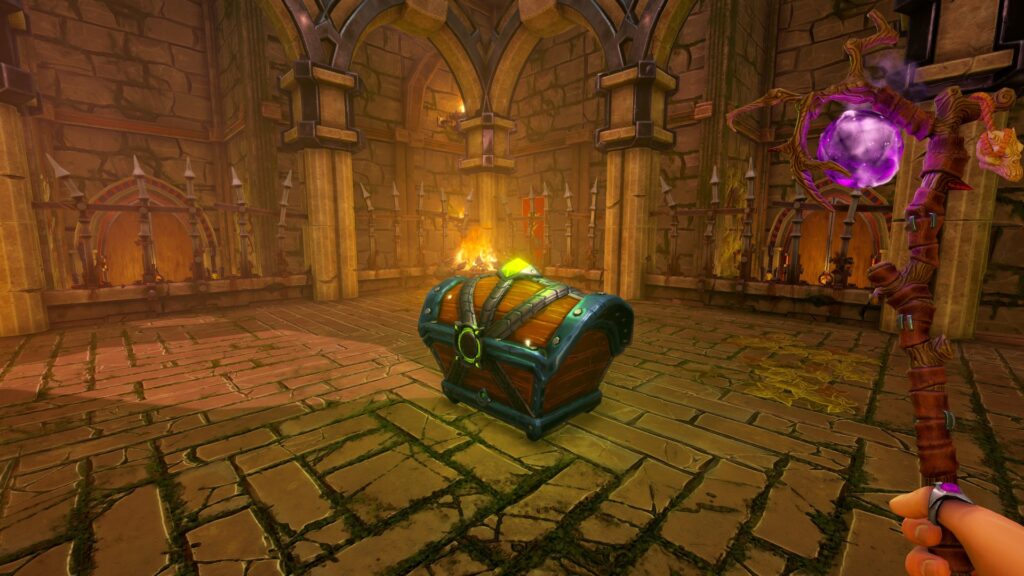
During your run, and by increasing experience you’ll be selecting a “Perk”. Perks are the main way to improve the player’s powers in the middle of a mission, and range from a simple boost to mana capacity to a chance of burning enemies hurting you. A choice of 3 perks (4 with Bookworm perk) will be presented, and the player must choose one or re-roll for new choices using coins. Perks are categorized in Offensive, Defensive, Healing, Movement, Mana, Growth, and Utility. There are 53 general perks and 66 Hero-specific perks in the game. Examples of perks include “Cleansing” which “Upon leveling up, all enemies become Cursed. You get 3 Barrier for every cursed enemy.” and Medication which “Increase the size of all Mana Pools by 10%”.
Another thing you should look after is fragments of a Master key – to open a Magic Lock room. Once unlocked, inside you will find an anvil to upgrade your weapon or an altar that will give you an “Oath”. Compared to Perks, Oaths generally have stronger effects, but on the other hand, Oaths always incur a downside/tradeoff. Oaths names consist of an adjective (responsible for the negative effect) followed by a noun (responsible for the positive effect). Both adjective and noun are randomized, so you can have an Oath consisting of any combination of these two components, except when the effects are directly contradictory (e.g. “+15% Staff damage” and “-15% Staff damage” together) – e.g Tenacious Knowledge which reduces the stuns to enemies by 25% (courtesy of “Tenacious”) while at the same time adds 10% experience from crystals.
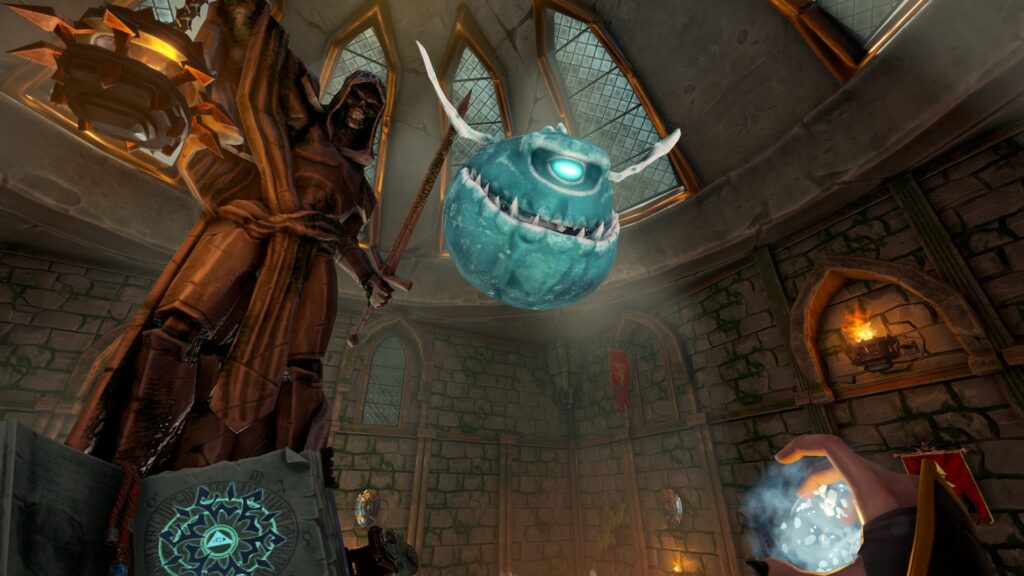
Enemies are varied, with lots of creepy carrot-like mobs chasing you around the floor levels as well as a certain type of enemy resembling Cacodemons from Doom. You’ll spend a lot of time trying to figure out the best strategy to beat those without getting killed, and they’ll always keep you on your toes when you encounter them. Again Doom’s influence is apparent.
Bosses are well designed (if not a bit repetitive) and to kill them you usually need to kill a bunch of mobs that shield them, so the loop there goes like this: you shoot the boss till his health drop, minions shield him and he’s invulnerable to your damage – then you need to switch to kill those shielding mobs – when the shield drops you resume damaging the boss – rinse and repeat, boom – profit!
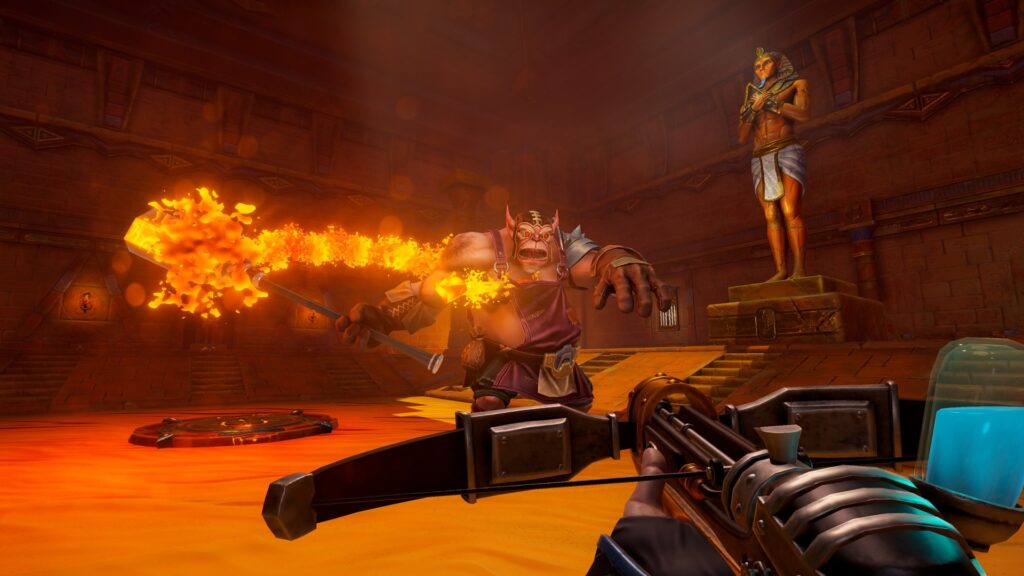
The gameplay is very fast-paced and the overall feeling is incredible, easily on par with the best FPS around. You constantly need to move, dodging enemies and enemy attacks as you shoot back at them, all while keeping an eye out for your cooldowns and mana levels. Combat is very enjoyable and exciting – especially satisfying when you get to clear a whole room of enemies and proceed to the next (similarly to Doom’s gore nests). In case you’re having problems completing the levels or you find the game difficulty to be on the easier side, you can select the suitable difficulty between 5 different options ranging from Novice to Arch-Mage.
In regards to maximizing stats in both weapons and characters, developers played it rather safe – everything is incremental in small chunks with no game-breaking abilities that might influence the game balance, which is understandable but still, the player might crave for something more extreme to work towards to.
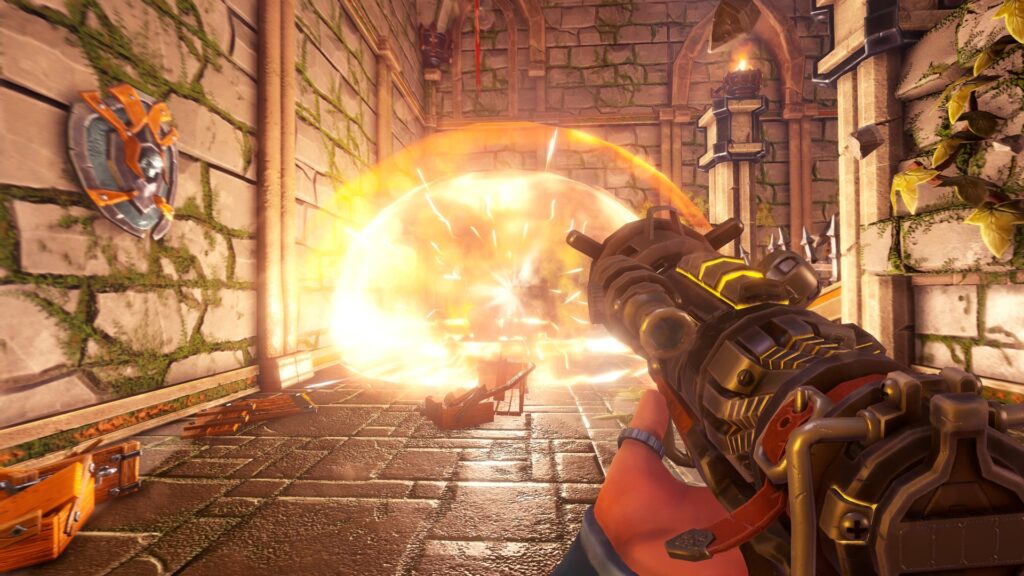
The graphics of the game are really nice, and the movement is very fluid, adding to the overall sense of polishing the developers have done – you rarely have a frame-drop even in very hectic Gauntlets. The visual effects are well done and you can easily distinguish the various elemental attacks and act accordingly – a welcome help when you need to be constantly adjusting your play style depending on what the various enemies and their attacks are. Music on the other hand is based on a Celtic soundtrack featuring tracks like Antumnos from Antti Martikainen Music and others which are very fitting to the game and even greater for standalone hearings. Again the sound effects are detailed and provide a nice sense of the position of where the enemies are.
The game was recently released after a year of updates and extreme polishing in Early Access, so it’s one of the games that EA actually made them better and one of those that actually get a release rather than lingering in EA forever, so kudos to the developers. That being said, Ziggurat 2 is a huge improvement over the original, and we strongly recommend it if you’re looking for one of the best fast-paced FPS that has both a nice storyline, an addictive game loop, and a multitude of modes to sink your teeth into!
Graphics: 8,5 Sound: 9 Gameplay: 9 Fun Factor: 9 Final Verdict/Overall: 8,9 Time to beat: 4 to 5 hours for main story, more than 60 hours for completing everything.
This post was first published on overage-gaming by static. If you like what you see here and want to see more, you can check me out on Twitter and YouTube as well.
